Abstract
Dobrogosz, Walter J. (North Carolina State University, Raleigh). Altered end-product patterns and catabolite repression in Escherichia coli. J. Bacteriol. 91:2263–2269. 1966.—End products formed during growth of Escherichia coli ML30 on glucose were examined under various conditions known to promote or prevent catabolite repression of the inducible β-galactosidase system in this organism. Cultures were grown under these conditions in the presence of C14-glucose or C14-pyruvate. The products formed were assayed isotopically after separation on columns of silicic acid. Under conditions known to promote catabolite repression, glucose was degraded primarily to acetate and CO2. When repression was turned off by anaerobic shock, glucose metabolism was characterized by the accumulation of ethyl alcohol in addition to acetate and CO2. The results presented in this report indicate that oxidative decarboxylation of pyruvate may markedly affect the amount of energy that can be derived from glucose catabolism. In turn, the amount of energy derived from catabolic processes may play a key role in the mechanism of catabolite repression.
Full text
PDF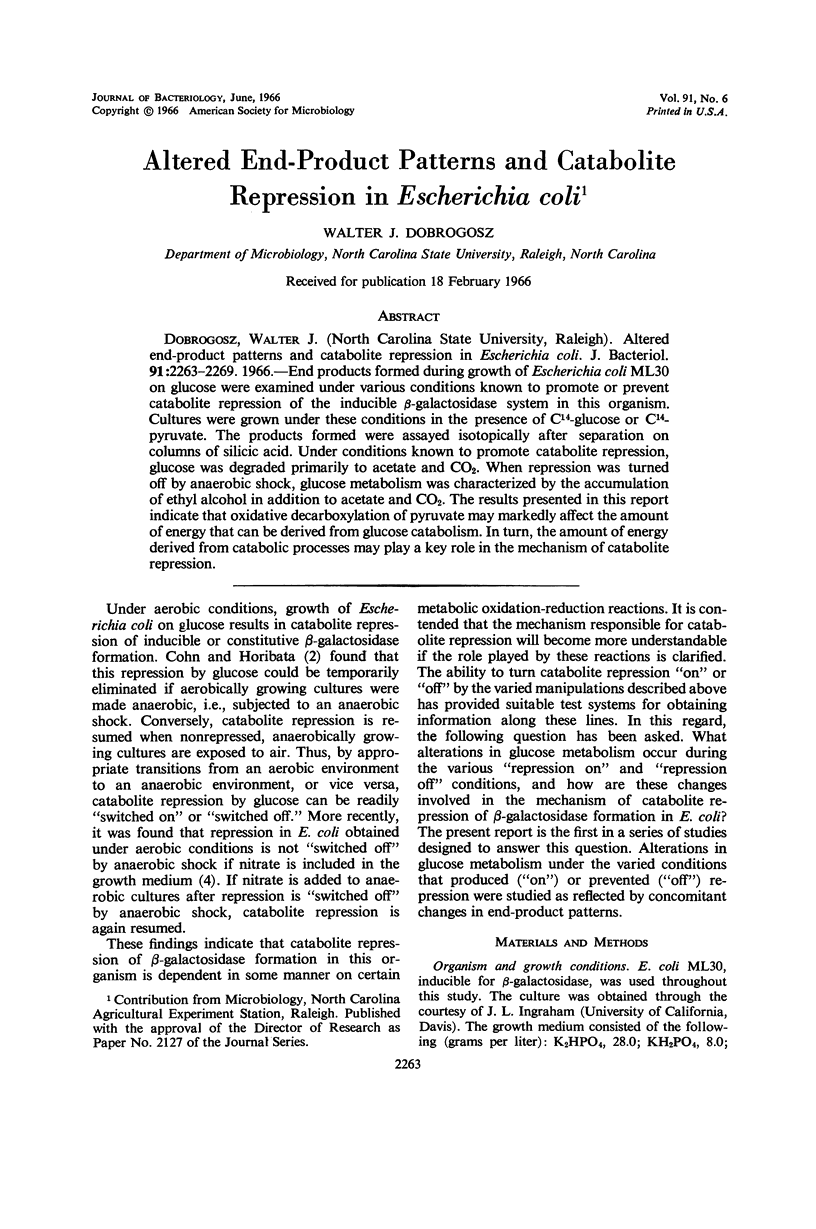
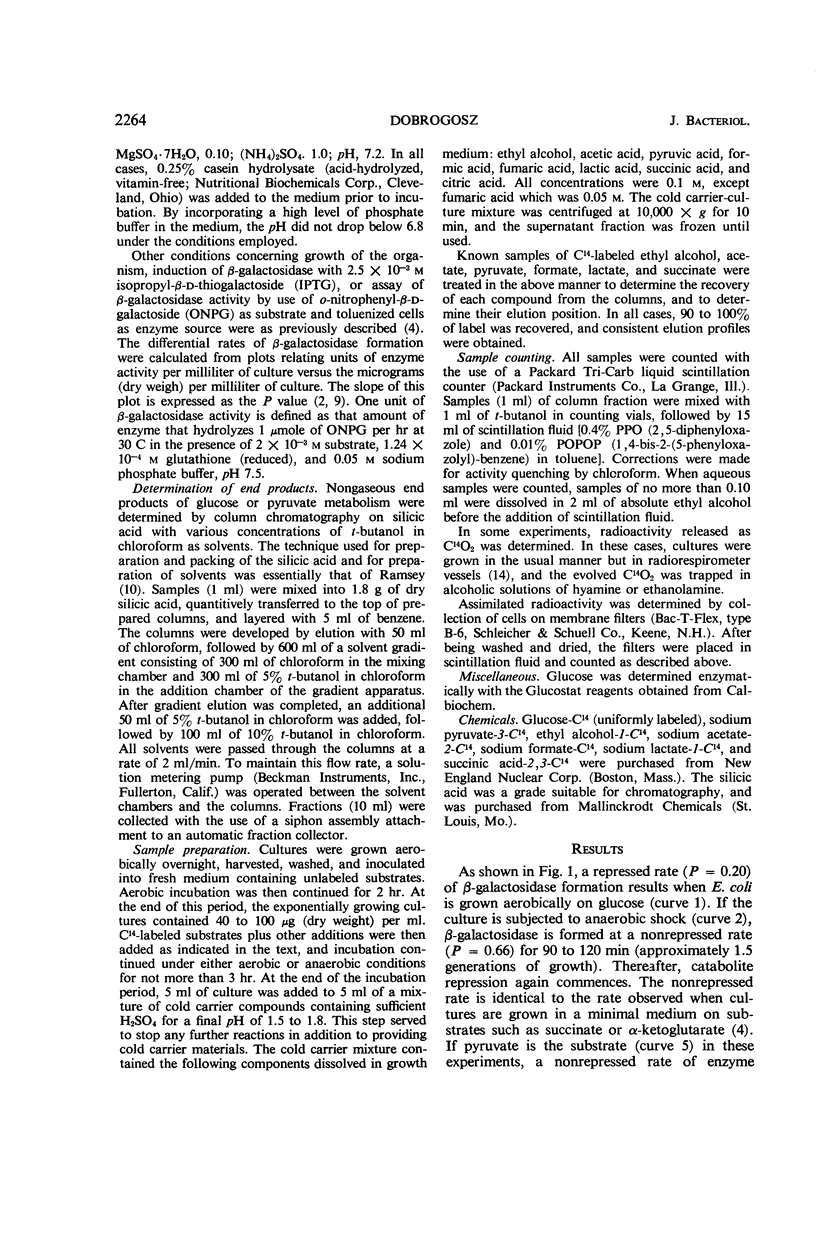
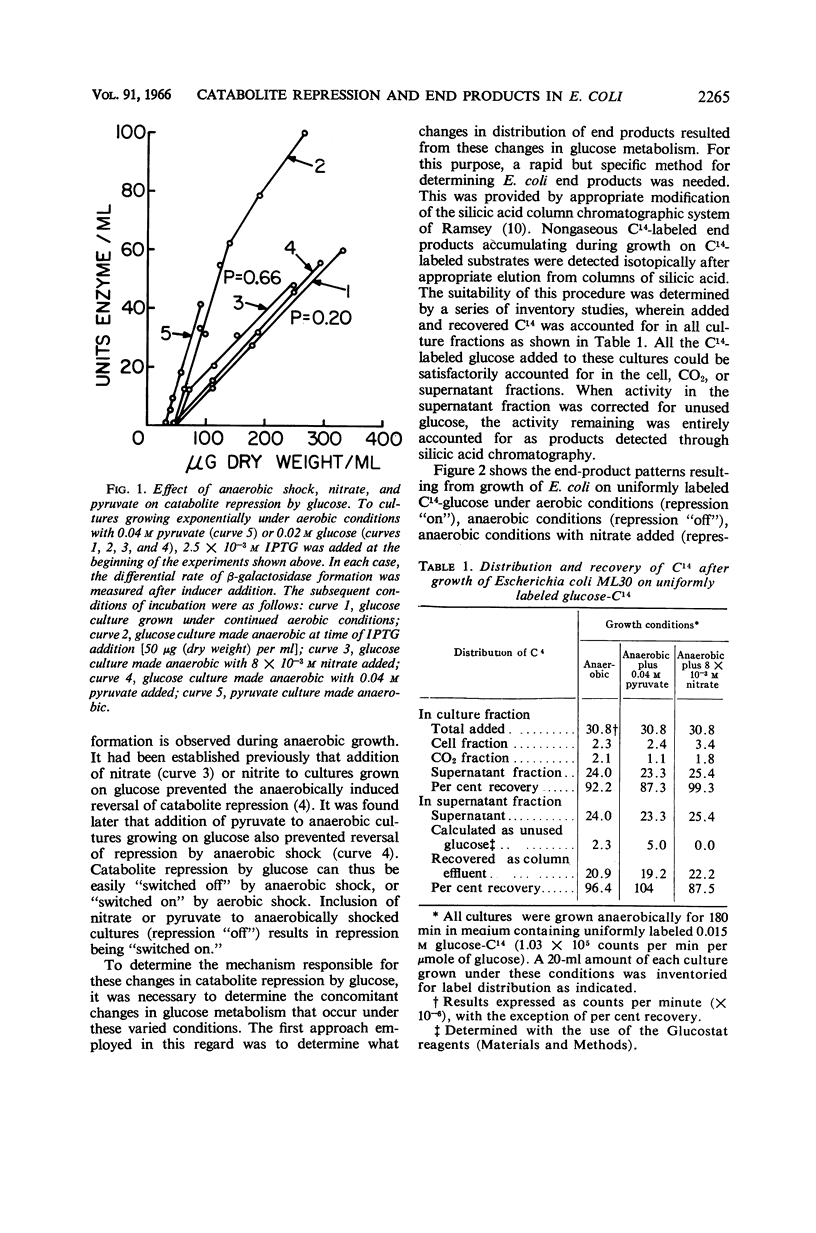
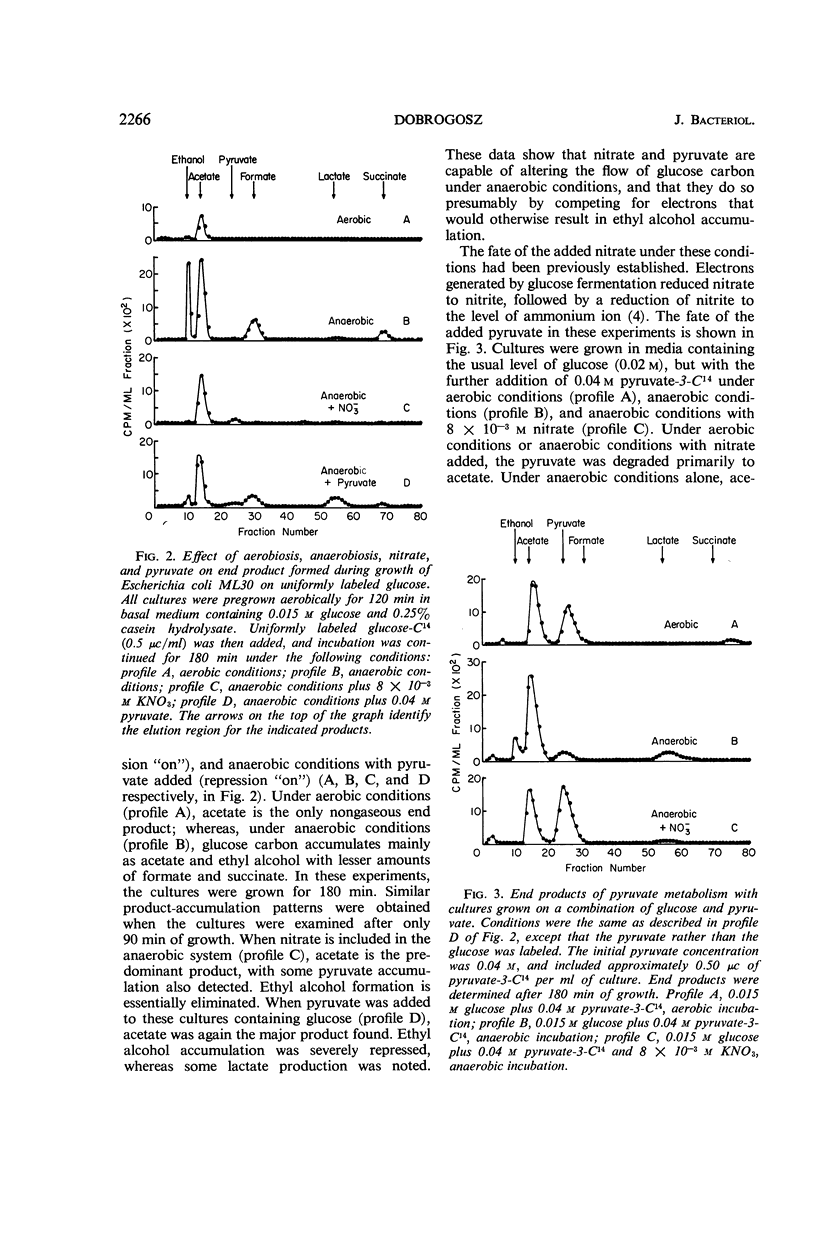
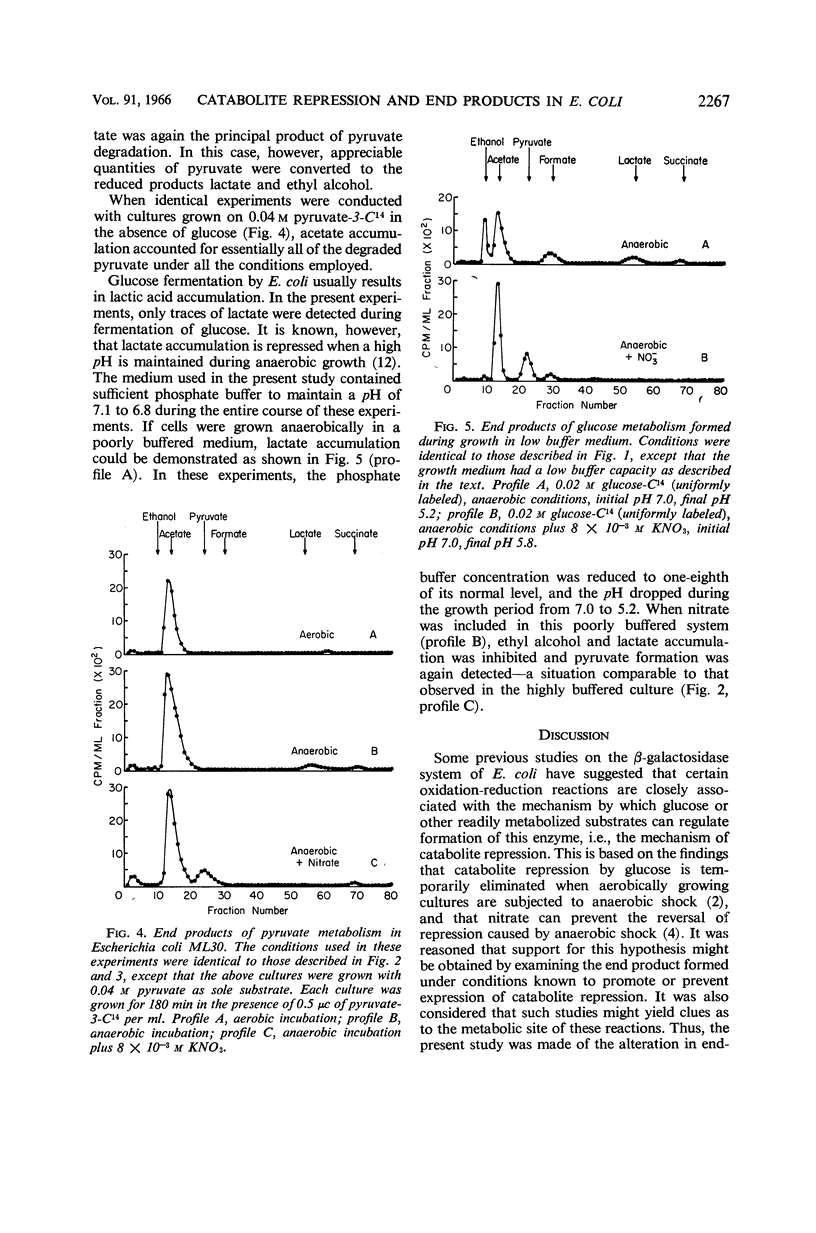
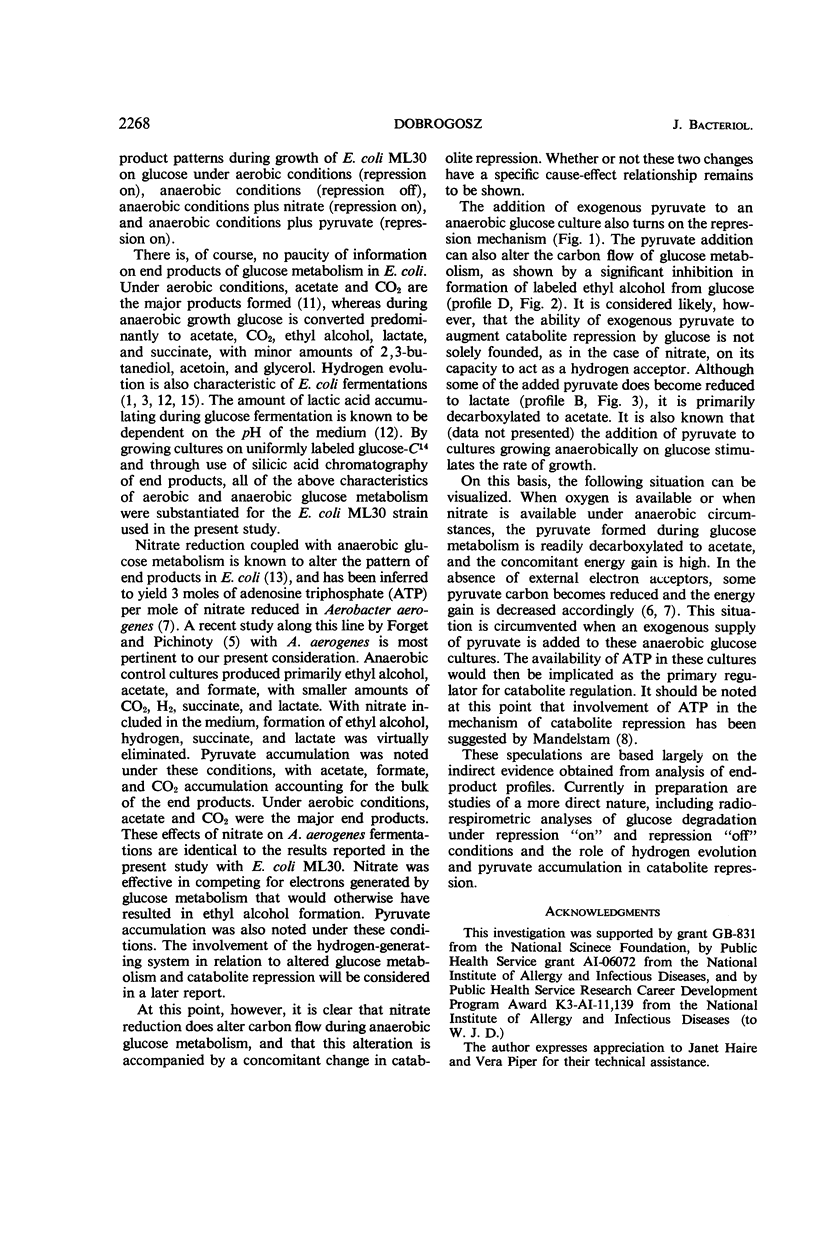
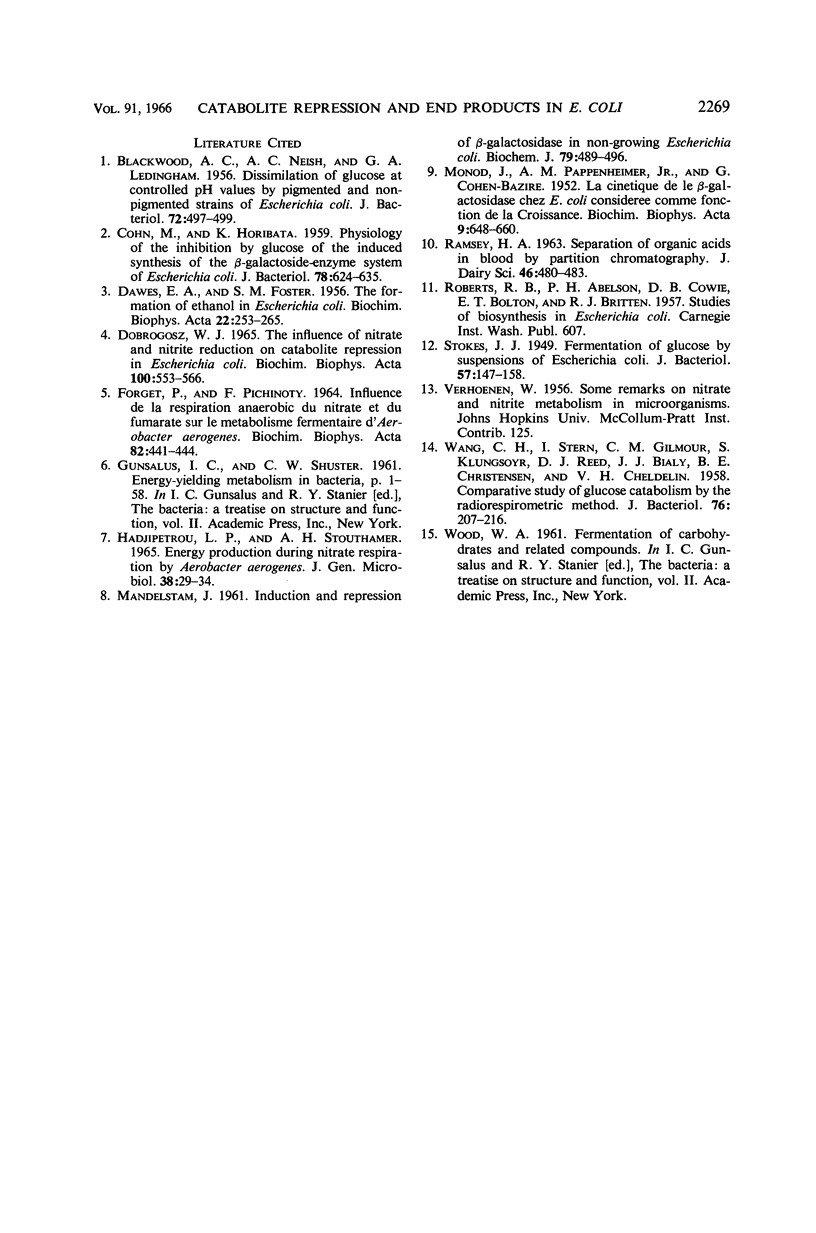
Selected References
These references are in PubMed. This may not be the complete list of references from this article.
- BLACKWOOD A. C., LEDINGHAM G. A., NEISH A. C. Dissimilation of glucose at controlled pH values by pigmented and non-pigmented strains of Escherichia coli. J Bacteriol. 1956 Oct;72(4):497–499. doi: 10.1128/jb.72.4.497-499.1956. [DOI] [PMC free article] [PubMed] [Google Scholar]
- COHN M., HORIBATA K. Physiology of the inhibition by glucose of the induced synthesis of the beta-galactosideenzyme system of Escherichia coli. J Bacteriol. 1959 Nov;78:624–635. doi: 10.1128/jb.78.5.624-635.1959. [DOI] [PMC free article] [PubMed] [Google Scholar]
- DAWES E. A., FOSTER S. M. The formation of ethanol in Escherichia coli. Biochim Biophys Acta. 1956 Nov;22(2):253–265. doi: 10.1016/0006-3002(56)90148-2. [DOI] [PubMed] [Google Scholar]
- DOBROGOSZ W. J. THE INFLUENCE OF NITRATE AND NITRITE REDUCTION ON CATABOLITE REPRESSION IN ESCHERICHIA COLI. Biochim Biophys Acta. 1965 May 4;100:553–566. doi: 10.1016/0304-4165(65)90025-5. [DOI] [PubMed] [Google Scholar]
- FORGET P., PICHINOTY F. INFLUENCE DE LA RESPIRATION ANA'EROBIE DU NITRATE ET DU FUMARATE SUR LE M'ETABOLISME FERMENTAIRE D'AEROBACTER AEROGENES. Biochim Biophys Acta. 1964 Feb 10;82:441–444. doi: 10.1016/0304-4165(64)90328-9. [DOI] [PubMed] [Google Scholar]
- HADJIPETROU L. P., STOUTHAMER A. H. ENERGY PRODUCTION DURING NITRATE RESPIRATION BY AEROBACTER AEROGENES. J Gen Microbiol. 1965 Jan;38:29–34. doi: 10.1099/00221287-38-1-29. [DOI] [PubMed] [Google Scholar]
- MANDELSTAM J. Induction and repression of beta-galactosidase in non-growing Escherichia coli. Biochem J. 1961 Jun;79:489–496. doi: 10.1042/bj0790489. [DOI] [PMC free article] [PubMed] [Google Scholar]
- MONOD J., PAPPENHEIMER A. M., Jr, COHEN-BAZIRE G. La cinétique de la biosynthèse de la beta-galactosidase chez E. coli considérée comme fonction de la croissance. Biochim Biophys Acta. 1952 Dec;9(6):648–660. doi: 10.1016/0006-3002(52)90227-8. [DOI] [PubMed] [Google Scholar]
- Stokes J. L. FERMENTATION OF GLUCOSE BY SUSPENSIONS OF ESCHERICHIA COLI. J Bacteriol. 1949 Feb;57(2):147–158. doi: 10.1128/jb.57.2.147-158.1949. [DOI] [PMC free article] [PubMed] [Google Scholar]
- WANG C. H., STERN I., GILMOUR C. M., KLUNGSOYR S., REED D. J., BIALY J. J., CHRISTENSEN B. E., CHELDELIN V. H. Comparative study of glucose catabolism by the radiorespirometric method. J Bacteriol. 1958 Aug;76(2):207–216. doi: 10.1128/jb.76.2.207-216.1958. [DOI] [PMC free article] [PubMed] [Google Scholar]


